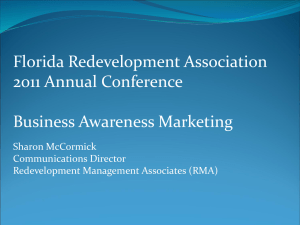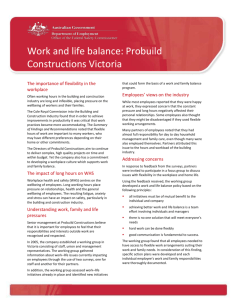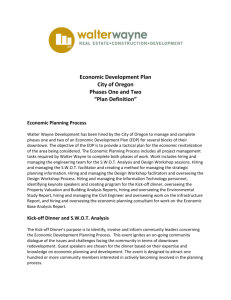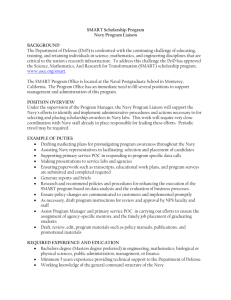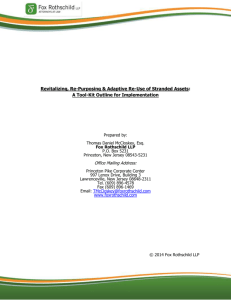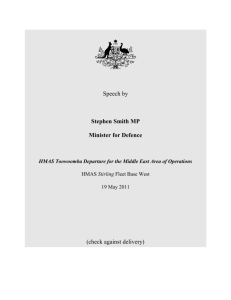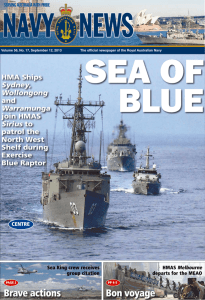Case Study - Safety Award - HMAS Creswell Redevelopment Team
advertisement
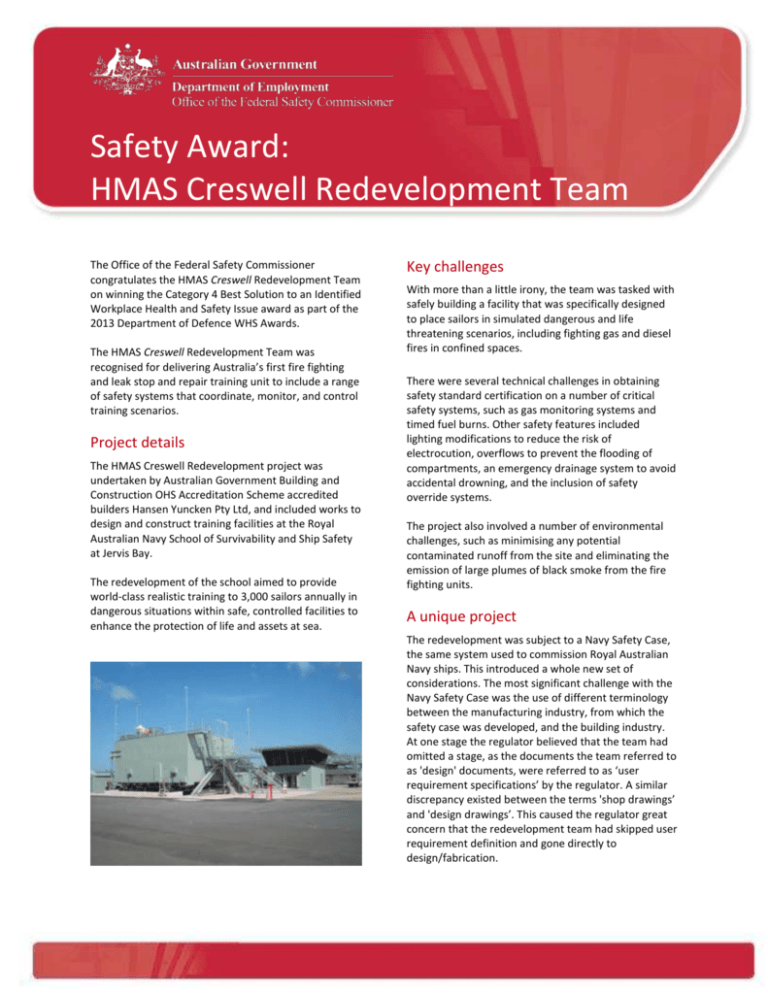
Safety Award: HMAS Creswell Redevelopment Team The Office of the Federal Safety Commissioner congratulates the HMAS Creswell Redevelopment Team on winning the Category 4 Best Solution to an Identified Workplace Health and Safety Issue award as part of the 2013 Department of Defence WHS Awards. The HMAS Creswell Redevelopment Team was recognised for delivering Australia’s first fire fighting and leak stop and repair training unit to include a range of safety systems that coordinate, monitor, and control training scenarios. Project details The HMAS Creswell Redevelopment project was undertaken by Australian Government Building and Construction OHS Accreditation Scheme accredited builders Hansen Yuncken Pty Ltd, and included works to design and construct training facilities at the Royal Australian Navy School of Survivability and Ship Safety at Jervis Bay. The redevelopment of the school aimed to provide world-class realistic training to 3,000 sailors annually in dangerous situations within safe, controlled facilities to enhance the protection of life and assets at sea. Key challenges With more than a little irony, the team was tasked with safely building a facility that was specifically designed to place sailors in simulated dangerous and life threatening scenarios, including fighting gas and diesel fires in confined spaces. There were several technical challenges in obtaining safety standard certification on a number of critical safety systems, such as gas monitoring systems and timed fuel burns. Other safety features included lighting modifications to reduce the risk of electrocution, overflows to prevent the flooding of compartments, an emergency drainage system to avoid accidental drowning, and the inclusion of safety override systems. The project also involved a number of environmental challenges, such as minimising any potential contaminated runoff from the site and eliminating the emission of large plumes of black smoke from the fire fighting units. A unique project The redevelopment was subject to a Navy Safety Case, the same system used to commission Royal Australian Navy ships. This introduced a whole new set of considerations. The most significant challenge with the Navy Safety Case was the use of different terminology between the manufacturing industry, from which the safety case was developed, and the building industry. At one stage the regulator believed that the team had omitted a stage, as the documents the team referred to as 'design' documents, were referred to as ‘user requirement specifications’ by the regulator. A similar discrepancy existed between the terms 'shop drawings’ and 'design drawings’. This caused the regulator great concern that the redevelopment team had skipped user requirement definition and gone directly to design/fabrication. The unique nature of the redevelopment also raised questions as to which standard to apply to the Dynamic Leak Stop Units that formed the core of the training facility, with the closet applicable standard being the Australian Standard for Amusement Park Rides. The Managing Contractor, Hansen Yuncken Pty Ltd, also suggested that the team have the manufacturers peer review the designs as the best method of ensuring high levels of safety compliance. This led to the inclusion of a number of critical safety systems such as gas monitoring systems, and timed burns of the fuels, which triggers an alert that shuts down the units should a flame continue to burn. extensive collaboration between a range of stakeholders - particularly trainers and users of the training facilities - in the design and development of the Navy Safety Case. The Navy Safety Case remains a live document maintained by the operators of the facility into the future. Congratulations to the HMAS Creswell Redevelopment Team for successfully producing one of the safest training units of its type in the world. About these case studies The Australian Government is committed to improving the WHS standards for all workers on building and construction projects. These case studies have been developed to share practical ideas that can be adopted by industry to assist in their own management of WHS issues. The Federal Safety Commissioner consults widely with industry, WHS authorities and other relevant agencies to promote a cooperative approach to improving WHS performance. Safety approach Meeting these challenges and safely delivering new facilities required a commitment to safety from everyone involved in the project. Two particular elements that contributed greatly to the successful outcome were: undertaking a comprehensive Navy Safety Case which reviewed the possible risks to personnel using the training facilities and set out necessary measures to ensure these risks were controlled in the design and construction process. A Navy Safety Case to a building project had not been undertaken previously in Defence for anything other than ships and ship-borne systems, and The vision of the Federal Safety Commissioner is a building and construction industry where no one is harmed. For further information you can: visit the FSC website at fsc.gov.au contact the FSC Assist Line on 1800 652 500 contact the OFSC via email at ofsc@employment.gov.au The Office of the Federal Safety Commissioner has prepared this case study to promote workplace health and safety (WHS) in the industry. When developing OHS initiatives, businesses and individuals should consider the circumstances and requirements particular to them and seek professional advice where required. While the Commonwealth has exercised reasonable care in providing useful information, the Commonwealth makes no representations, express or implied, as to the accuracy of the information contained in this case study. The Commonwealth accepts no liability for any use of the information contained in this case study or any reliance placed on it. This case study may list persons, organisations, products or services or may incorporate material sourced from third parties. Such lists or material are assembled in good faith. However, any such list or material does not necessarily constitute any form of endorsement by the Commonwealth of that person, organisation, product, service, or third party. The Commonwealth does not accept any responsibility for such list or material.

